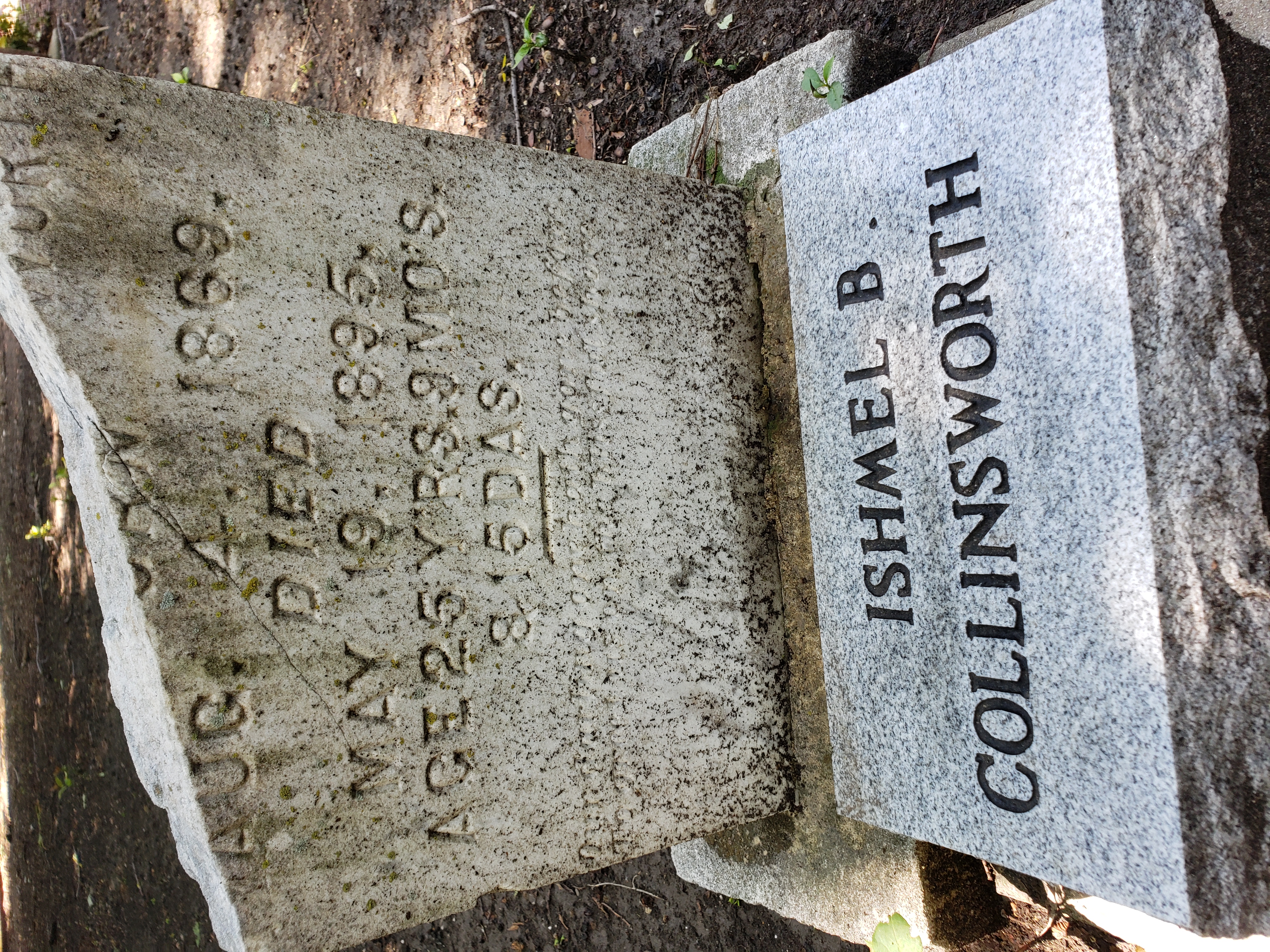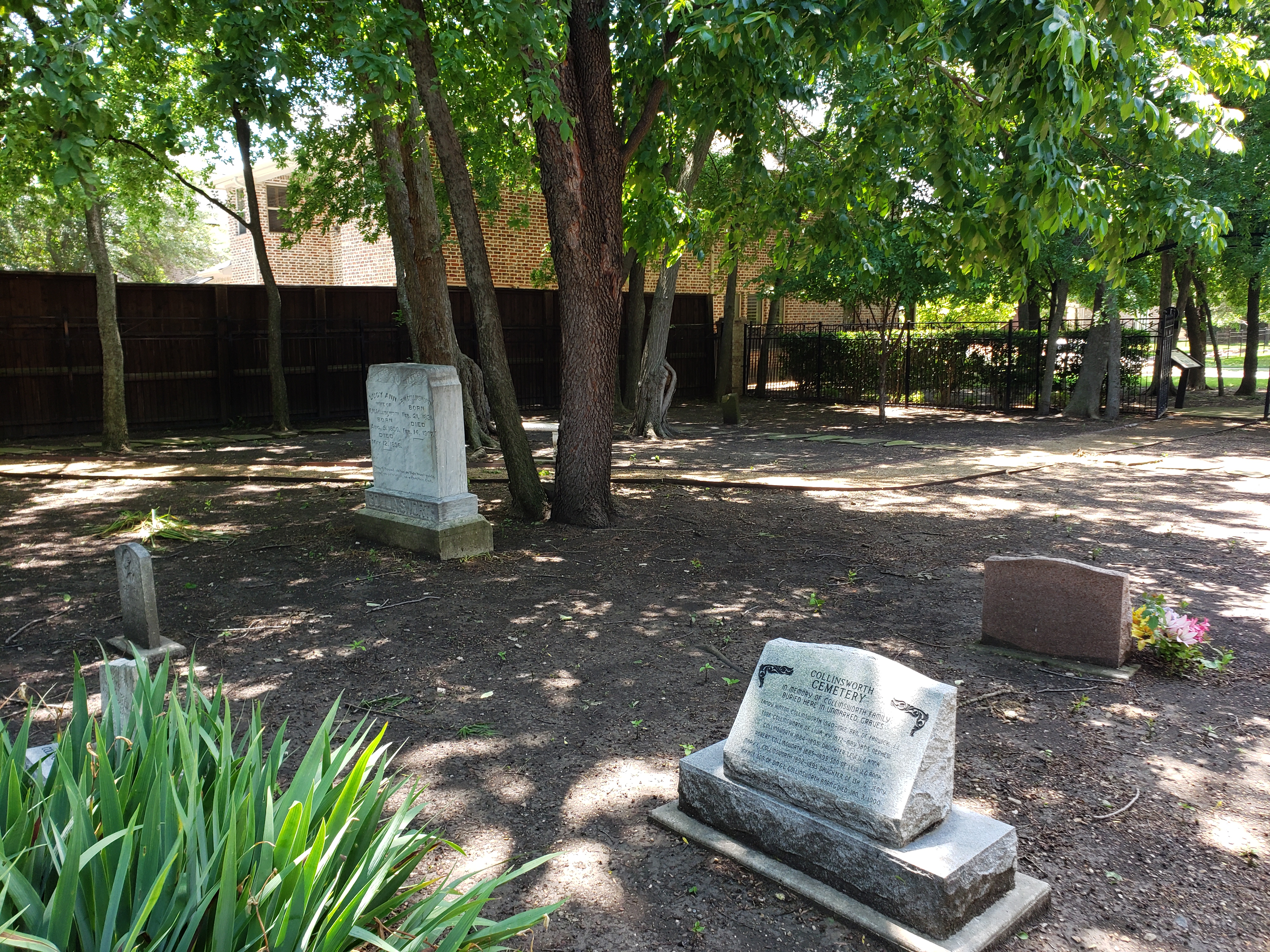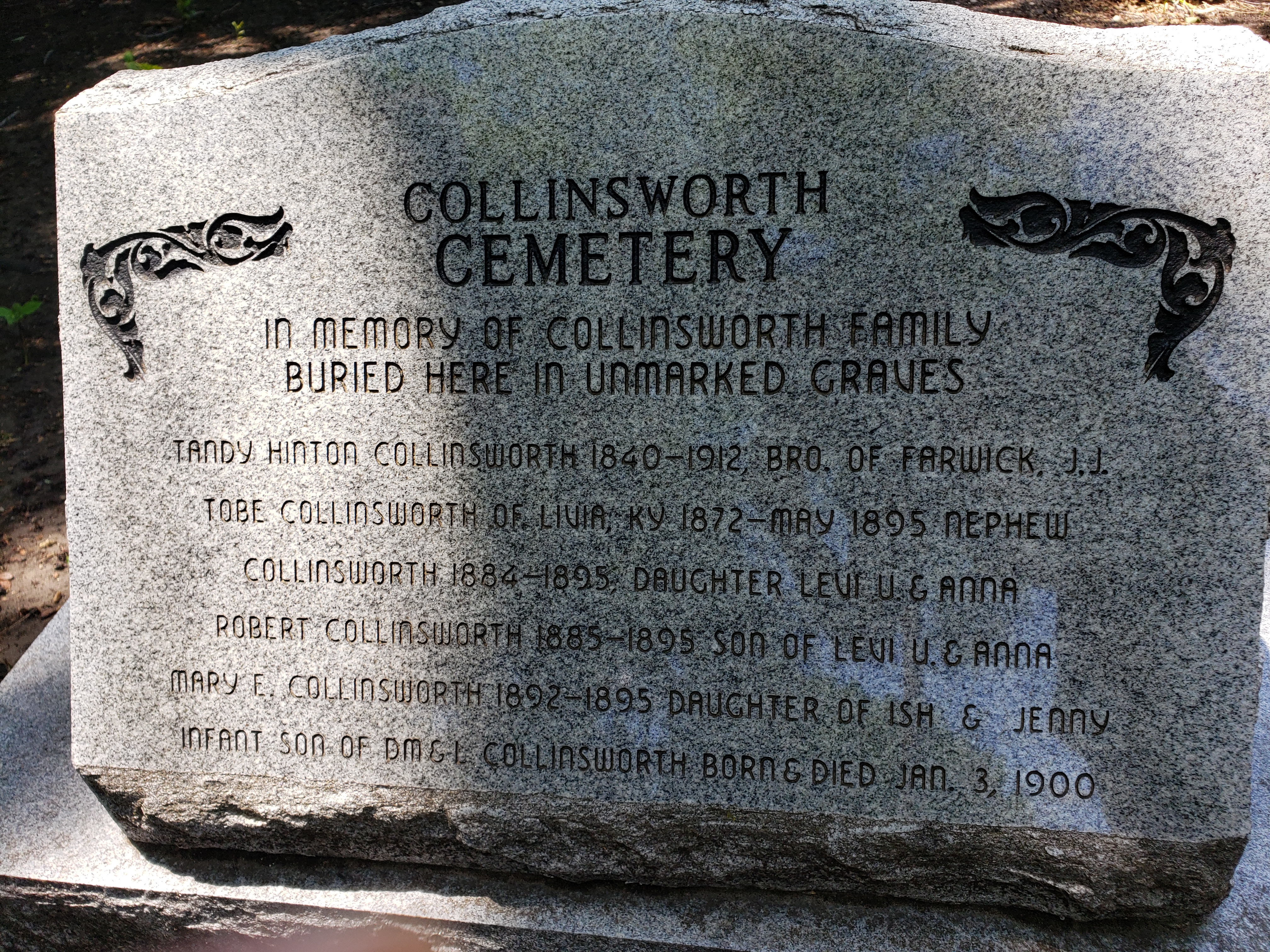I stumbled upon the Collinsworth Historical Cemetery in Plano after a quick Google map search. It is a wee cemetery tucked in to a corner of a housing development – even with directions, I circled the block twice before locating it. But, it was worth my time. It is a stunningly elegant little cemetery. There are stone and crushed gravel paths through the small lot. Very few headstones remain. But, the entire thing is shaded with lovely old growth trees. The atmosphere in the cemetery now is much different than it was when the cemetery was created, though.
In 1895, this cemetery was started on the property of Daniel M (Milt) Collinsworth. It was begun out of necessity during a smallpox plague that would wipe out a sizeable chunk of his family. Milt Collinsworth, being generous, invited a traveling salesman to spend the night at the family home off Parker Road. Unbeknownst to anyone, the salesman had smallpox and would complain of not feeling well the next morning. Milt’s daughter changed the bedlinens and became stricken with smallpox. The doctor was called, but that doctor did not understand the protocols for containing the outbreak. His lax instructions quickly resulted in four deaths in 30 days. Because so many people from the extended family attended the funerals, smallpox killed a further six Collinsworth family members.
The City of Plano stepped in and quarantined all of the Collinsworth land – between Spring Creek Parkway, Park Boulevard and Coit Road, Preston Road. No transport was allowed through this area which made life extremely tough on the family within. A few friends took pity and passed food and medicine to the Collinsworths. Several of the people willing to go in to the quarantined area had recoved from the smallpox and were immune. Plano passed a resolution to require vaccination of the population to guard against another outbreak.
The Collinsworth family was originally from Tennessee and used this cemetery until the 1930s. They still have control of the cemetery. The historical text states that several of the original headstones have gone ‘missing’. The only original headstone from the smallpox epidemic appears to be that of Ishmel who was 25 years old when he died in May of 1895.





